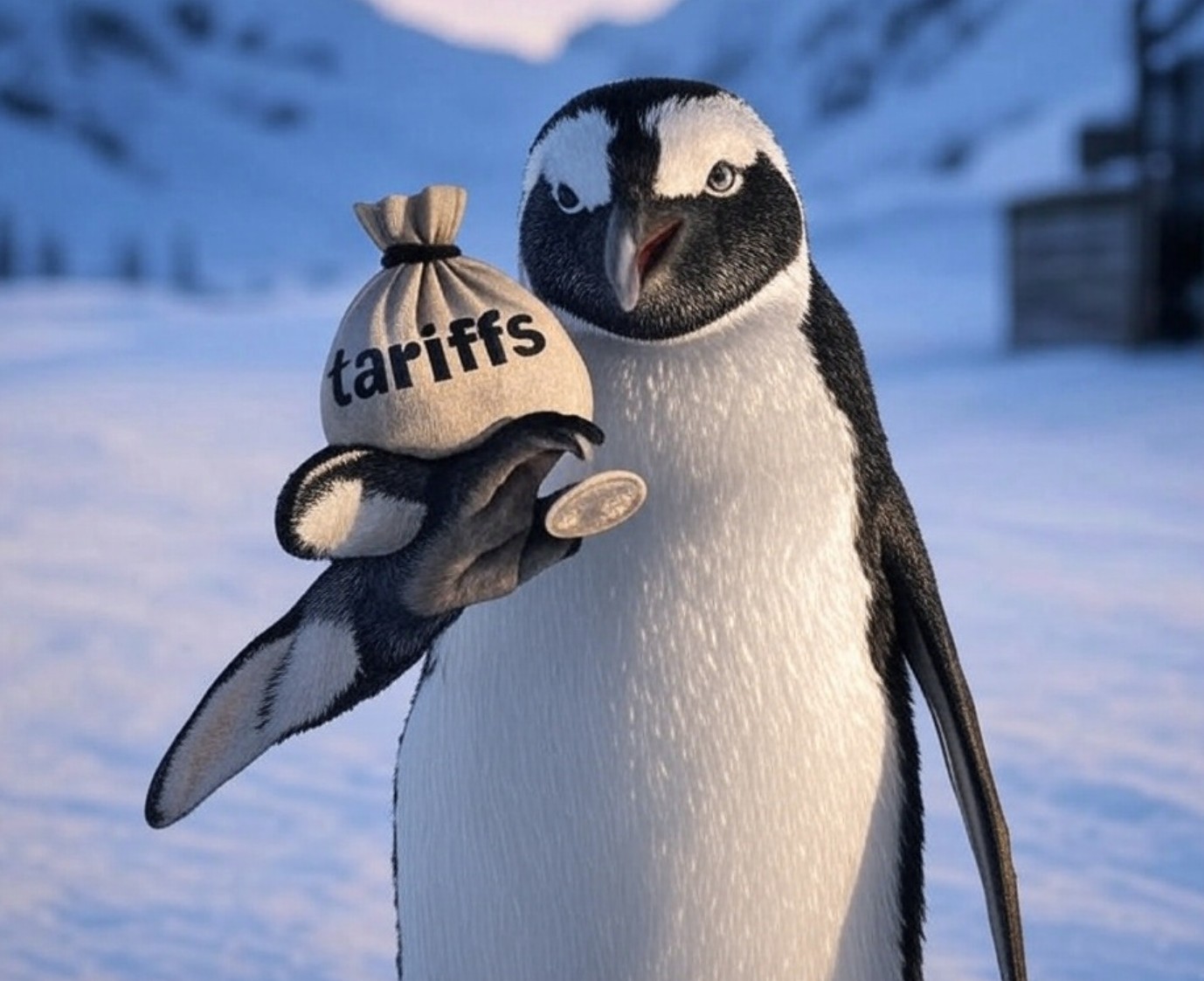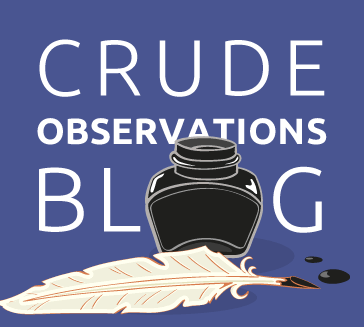Well, here we are people. Your favourite time of year. That brief moment in time where I seem like the prescient genius I actually am That shiny little nanosecond where I am on the front of the Titanic, a veritable King of the Forecasting World before it all comes apart in a ritual of self-loathing and abject, public, humiliation.
That’s right, it’s the Fearless Forecast! Brought to you by the same hapless scallywag who brought you $90 oil in 2017, bullish investment calls on Canadian rig operators and perpetually optimistic forecasts as to the direction of natural gas prices.
You may not know it, but this is what I have been building to since I started to mail it in as of early December. You see, I do have a plan with all those Christmas blogs – movie ratings, naughty and nice lists, poems. It’s all part of my covert plan to observe the world, come up for air and determine for you, my dear readers, what exactly the heck is going to happen in the upcoming year.
It’s really a self-sacrificing act of service. You should be honoured I make the effort. I’m actually surprised that I make it available for free! If I could figure out how to use Substack, I would make you subscribe – I could be a millionaire by lunch.
So all those impending investment decisions, life-changing country allocations and Bitcoin ETF buys that you have put on hold while awaiting some kind of proclamation from on high can now be reactivated, because below you will find the one, the only true and trustworthy source of future knowledge you will need: the annual Stormont Capital Fearless Forecast.
That’s right, it’s not just any forecast. It’s a FEARLESS one.
So, you may ask yourself, what does fearless mean to the little people? Well, it means it is bold, brash, unconventional and will contain no less than six humdingers. Some of which have as much chance of occurring as a Trump-Pence 2024 ticket, but some, well they have a “Trudeau does something economically inept” certainty to them. You can take that business case to the bank!
Still others have the inevitability of another dumpster fire year for natural gas pricing, which may or may not be one of my predictions for this year. Sorry if that offends you, I can only say what the magic 8-ball, umm crystal ball, tells me, not necessarily what I prefer. Energy investors and geophysicists, you have been warned. Plan accordingly.
So come on folks and step right up, step right up and let me tell you about the prognostications and guessifications that will provide amplification and electrification to your portfolios. The stock picks and the macro directions that will set you on the path to eternal riches and immortal salvation.
The fever dreams, the visions, the words that will allow you to rise above the petty, malignant grind of your humdrum daily lives, secure in the knowledge that up is up, down is down and whatever is in the squishy middle is indeed edible.
And if I am wrong, so what!
Right?
It’s not like anyone has ever actually risked any money on the basis of these forecasts.
Right?
Like seriously folks.
Don’t do that.
And if I may say so myself, compared to prior years, this may be the Greatest Forecast Ever AssembledTM
Even better than last year where I got pretty much everything wrong except the dollar of all things.
Once again, this will be in list form. Centred around my main Broad Themes.
Follow along. If you dare.
Broad Themes
If I’m really going to be committed to this forecast, I need to pick my “broad themes” properly so that I can refer to them as often as possible in the forecast because I think they underpin a lot of what will be driving the global landscape over the coming year.
I have three, and they aren’t surprising, because they are in the news. All. The. Time. But they matter and if you are going to take anything from this forecast, plan your life around these three critical themes.
- 2024 – the Year of Elections (just not in Canada)
- Global Instability
- Interest Rates and their fickle direction
Each of these will in some way inform and influence all that follows
Politics and Stuff
- Sorry folks but I am guessing there will be NOT be an election in Canada this year. The Trudeau government, as long in the tooth and economically inept as it is, and the Liberal Party of Canada have been allowed to act like a majority for the better part of three years and while everyone is tired of Jagmeet Singh, he is incapable of pulling the pin on the Liberals, even if the polls show the LPC at risk of obliteration. Pierre Poilievre, as talented a woodworker as he is, has managed to reinvent himself as some form of Milhouse with no glasses populist and while his voice is still fingernails on a chalkboard, an angry Canadian electorate has bought into hos message of Trudeau induced doom and gloom. The polls say it works and the LPC knows it is working so they are busye dusting off every progressive chotchke they have kept in the tickle trunk to keep the NDP at bay. Why? Because Trudeau, unpopular as he is, won’t leave. And there are zero compelling candidates in the wings. Freeland was floated as an option in the before times, but she has zero appeal outside caucus. Mark Carney is going to wait until a political evisceration happens to satisfy his saviour complex. So, no Canadian election in 2024, just hyper partisan warfare that we won’t be able to read about on Facebook, ‘cause you can’t get news there anymore in Canada. For the record, if there were an election this year, Trudeau would lose. Very. Very. Badly. Hence, no election.
- South of the border, the US presidential election of 2024 is going to be the most consequential since … the 2020 election? So look for another year of rabid partisanship, gridlocked government, Hunter Biden’s laptop, nutbar fringe republicans, far left dems threatening to wreck a good thing, Trump trials and threats and the media trying to explain how a growing economy, low unemployment, record stock markets, controlled inflation, massive infrastructure investment and record oil and gas production is a bad thing for Joe Biden and his re-election chances. Honestly folks, the last few years have had their challenges with rising inflation and interest rates, but when incomes and wealth are rising, and there has been a soft landing and interest rates start to come down (they will), I’d say Sleepy Joe did a pretty good job and that’s no malarkey.
That said, the election is coming and it’s Biden-Harris likely facing off against Trump-Haley/Mace/Lake/Stefanski/Ramaswamy and it is going to be trench warfare. Unless of course Trump drops out to pay attention to all his legal woes. From a Canadian’s perspective, it would be a welcome change to see Trumpism finally go away – really just Trump – and have politics go back to the normal “left-right” divide but it feels like we will need one final punishing election cycle for the GOP to realize that ETTD (everything Trump touches dies) is not just about various failed business ventures. Aside from fear of MAGA, the Republican party lacks anyone who has the charisma and fire in the belly to truly offer an alternative to Trump so until such a beast emerges, this is the political reality. It will be a close election. Too close to call with any certainty at this point with the electoral college being such a determining factor. On a popular vote basis, Trump is likely looking at a wipeout, but nothing can be taken for granted. Electorates everywhere are notoriously lazy and have a history of allowing demagogues and wannabe dictators get the keys to the liquor cabinet. Similarly, no one on the Dem side has a chance of beating Trump aside from Grampa Joe Biden. The “youth” movement in American politics is one election cycle away barring jail time. In Grandpa vs Grandpa Two, Electric Boogaloo, my money is on Old Man Biden, with a narrow electoral college win.
- Oddly, 2024 is a year of elections in a fairly significant number of countries (except Canada). Some of these are quite consequential as an indication of how geopolitics will unfold over the next few years and what we can expect the world to look like when Jagmeet Singh gets around to letting Canadians make their own decision on who they want leading them. Not in any particular order, the main elections coming up are Taiwan, where the result could lead to much more saber rattling by an increasingly belligerent China. This election is happening on Saturday so predicting would be silly, but the pro “maintain our independence” candidate is leading. India, which is the world’s largest democracy looks set to hand Narendra Modi another five year term, which isn’t surprising – since aside from his autocratic tendencies and extra-judicial murders he hasn’t done that bad a job. The United Kingdom goes to the polls in 2024 and it looks like the Bojo, Brexit, Liz Truss and her pet Head of Lettuce sins are finally coming home to roost with Labour recently leading the Conservatives by the same amount the Conservatives lead the Liberals here in Canada, where we won’t have an election in 2024. The end result is likely a slim Labour Majority, meaning more chaos for the UK. In Austria, a far-right anti-immigration, anti-Ukraine support party looks poised to win a majority in September. Last one I want to belabour is Mexico where the chosen successor to AMLO, Claudia Sheinbaum, looks set to beat out her main challenger – free market and privatization champion Galvez. Oh Venezuela is also slated to have an “election” in 2024. Guess who wins. All told, 50% of the world’s GDP is set to choose new leadership in 2024. It’s worth paying attention to.
- Geopolitical instability is something I mentioned as a theme and it is real and it should scare everyone. From Russia-Ukraine to Israel-Hamas to Iran vs everyone to China-Taiwan, instability is the story that won’t end. In my view, the chief architect of all of this is of course Vlad “the Impaler” Putin and his ill-advised and criminal invasion of Ukraine. I do not foresee any significant de-escalation in this conflict as the bare-chested buffoon continues to call up 100s of thousands of new conscripts to be used as cannon-fodder for an increasingly battle-hardened if under-supplied Ukrainian army. There is no victory in this war. China remains an enigma. They want Western money (you don’t get rich from trading with Russia) but need Russian energy and commodities. Plus, they hate Western democratic leadership and want free reign in Asia. India is only interested in India. My prediction is the war in Ukraine doesn’t end, Russia continues to self-destruct its economy and China begins looking for opportunities to realign West as outcomes become clear. The Israel-Hamas-Gaza hot war may scale down in the medium term but Iran is committed to stirring the pot via Hezbollah and Houthi rebels in Yemen even as their own country threatens to explode into civil war as the population chafes for freedom the clerics will not give them. The much-feared Taiwan invasion is off for another year – notwithstanding election results. Africa continues to be an afterthought to most of the “first world” except as a repository of minerals and war.
- Will we have a recession? I don’t know. What do I look like? A forecaster? Yeah, yeah. Here’s what I think. There will not be a recession. But the question you should be asking is if it is going to a real, textbook recession or is it going to be a recession of perception or a media recession – a vibecession if you will – good lord, of 2024 can give me anything, rid me of this term. If the former, the odds are less than 90%. If the latter, I have news for you – we are already there. Although it’s weird to me. Canada has a massively underperforming economy, but there is a significant part of the population that thinks things are just ducky. Meanwhile in the US, the Biden economy is cruising but listen to the media and you would think the Great Depression was happy fun times in comparison. And it can all be true because it’s all based on a vibe. Different economies will experience it differently. Whatever form the slowdown takes, it will be more severe outside the United States. Here in Canada, I feel that we will be skipping along at subpar growth for the year, achieving maybe an aggregate 2% GDP growth while the United States will continue to be goldilocks – not too hot, not too cold. Canada is just not dynamic enough to turn things around quickly and our affordability crisis is way worse than it is in the US, with debt and falling GDP per capita making us poorer by the day. Could the effects be muted by commodities? Yes. Does the Federal government see that? I doubt it. Regardless of how long or deep a downturn might be, I am hard-pressed to see any recovery being much more than muted. Yes, the central banks now have policy room, but what is the catalyst for growth in Canada the next several years? We have done tech, real estate, consumer goods, crypto, cannabis, energy and renewables. What’s left? Population growth, consumption and war.
- Driven by still high levels of energy insecurity and high prices, the energy sector is going to continue its gradual transition from a fossil fuel centred colossus of emissions to an “all of the above” source of diversified and, occasionally, low-cost energy. While billions continue to be spent on renewable capacity additions, the lack of attention to or love being shown to base load capacity continues to set the scene for recurring and rotating crises as the “grid” and the “consumer” struggle to balance affordability and availability. For industry participants, it’s precisely this type of chaotic destruction that creates opportunity. The smart players will straddle both worlds and become diversified “energy” companies and will secure the backing of capital providers who recognize the opportunity, aren’t intimidated by divestment movements or ESG box-tickers and will ultimately help manage the transition more effectively and efficiently than governments ever could.
- Peak Oil Demand, much celebrated around the ESG world has now officially been pushed back, yet again, as demand for oil in 2024 is expected to grow close to 104 mm bopd. Similarly, demand for natural gas will continue to grow to record levels. It is an accepted truth in the energy industry that demand for energy (all forms) just continues to grow, even while the constituent components shift their relative share. Renewable growth, primarily in wind and solar, is getting more expensive so in order to meet immediate needs, fossil fuels are required to fill that gap. This means Oil. Gas. Coal. The business case on this is clear.
- A prevailing theme across the energy sector (and the economy in general) is going to continue to be cost. Energy prices, while volatile, remain relatively high. The costs for wind and solar are rising. Labour shortages are pushing up labour costs. And finally, the interest rate induced increases in the cost of capital is going to make every project that much more expensive, every hurdle rate harder to clear and every decision that much more difficult. I expect to see investment in wind and solar to slow down and, conversely, investment in low hanging fruit fossil fuel projects, which are easier and typically cheaper to execute, to pick up. This is notwithstanding the governmental and regulatory headwinds that exist. I’m not suggesting places like Canada will be where this happens, because well, business case, but pretty much every other country in the world is investing in energy – all forms. At any rate, some of the project decisions that made sense when money was free will start to unwind over the course of the year as governments seek to profit from their own sources and economically shelter their populations.
- Capex in the oil and gas sector is going to moderate in both Canada and the United States this year. How do I know this? I don’t. But it seems like the right call. In the United States, the last year saw a significant amount of production get added and a 20% plus increase in spending but management teams at the larger companies are now focused again on asset acquisition and debt repayment, not production growth. To maintain the pace of the last year of growth will require massive amounts of capital that many companies simply don’t have access to. Expect US Capex growth to be sub-5%. An aggressive refill if the SPR changes this, but the Biden administration is distracted by the election. In Canada, capex could grow 5% to 10% depending on the timing of the Trans Mountain Expansion completion and updates to LNG Canada timing. Each of those projects will require significant production expansion. I’m not making call on OPEC++++ capex this year because they have close to 6 mm barrels per day of “spare capacity”. If I’m wrong and they spend like drunken sailors, the spare capacity gambit is a lie. A much bigger deal.
- The price of oil though 2023 is going to remain volatile. Absent any significant downward shock in the economy, change in hostilities in Ukraine, an asteroid strike or some other randomly annoying black swan (Trump in jail, health scare to one or both candidates, Canadian election), the price of oil (WTI) feels trapped in a $66 to $81 range with A LOT of action in between. This is the glory call of the Forecast, which is of course why it is buried so low down. Despite the lack of investment in prior years, traditional marginal growth suppliers have been able to ramp up supply – Brazil, Guyana etc. Not to mention the US juggernaut and its above forecast production growth which wasn’t entirely an accounting adjustment. Even Canada got in on the act. Will the capital disciplined producers in Canada and the US be there to add material incremental production if needed – may capex forecast says maybe not. Will decline rates finally win in the Permian? And how willing is OPEC++++ to actually manage the market, will they add surplus capacity? Do they really have it? Do the markets even care? I mean there is zero risk premium for all the wars we are experiencing. Iran attacks a tanker and the price of oil declines. It’s all upside down. Head down, take price, hedge when appropriate. Buy Canada. End of year price for oil is $74.83 (WTI) and the average for the year is going to be $72.37.
- Gas giveth, and gas taketh away. Last year was probably one of the more disappointing years for natural gas in my memory, rivalled only by the initial rise of shale. Producers over-produced, LNG was offline, climate changed – the headwinds were all… headwinds. In the Permian, gas-oil ratios expanded and associated gas production from all the tight oil growth pushed the Permian and Texas to its highest gas output ever. Prices at various hubs frequently averaged less than $2 an MCF (except in California and New England – heh heh heh) and, as usual, AECO was occasionally free. On the other hand, demand has never been higher and it is growing faster than demand for oil. And once LNG Canada comes onstream, watch out! But really – what does any of this have to do with 2024? Well, lots. The perfect storm for natural gas still exists. Russia is still not sending gas to Europe. A global market is forming. Consumption continues to rise. While US production sets records, it is still beholden to the big three shale regions (Permian, Marcellus and Haynesville) and any slip up could be cataclysmic. And when I drove to work this morning it was -38C, so I am accordingly, ill-advisedly bullish on gas. My year end call for natty is $4.23 per MCF and my average for the year is $3.61. A gradual reinflation of prices based on increased consumption, lower production growth in the Permian, a dose of bad weather and no recession. My downside risk to these prices is recession-based – if growth in the US slips appreciably, demand goes with it.
- According to the EIA weekly reports The US closed out 2023 with 13.2 mm bpd of production. According to their Short Term Energy Outlook they will close out 2023 with prodiction of 12.9 mm bpd. The STEO also forecasts 2024 year end production of 13.2 mm bpd. There are reasons for the discrepancy and I am told the STEO is the number to use so it would seem that the EIA is projecting between 2% and 3% growth in production. This is probably reasonable and given my US capex number, I tend to agree. But I always go back to shale math – staring from such a high number, decline rates suggest a whole lot of completions need to happen and the rig count and DUC levels don’t currently support that. Last year it was private Permian operators and GOM offshore that drove growth. This year, the private operators have been purchased and the GOM math is much more expensive. It will be hard to do a repeat. But with my prediction of a sub 5% increase in domestic US Capex, it would be unfair to deny production growth. Assuming the price deck holds, capital costs don’t go too bananas and labour issues can be resolved, 2 mm bpd isn’t out of the question.
- In Canada, growth is expected to exceed that of the United States but not all of it is oil-directed. The actual completion of Canada’s two big pipeline projects in late 2023/early 2024 means that there are now shiny new tubes just waiting to be filled with sweet, sweet Canadian molecules. Whether it is 867,000 barrels per day pouring into the Fraser River Delta (heh) or multiple BCF per day high-pressure natty hissing towards Kitimat, the drilling prospects for Canada to fill these respective pipelines are bright. Here in Canada, we typically talk about drilling rather than production numbers, but it wouldn’t be unreasonable to expect a 2%-5% increase in Canadian oil production over the course of the year and a similar increase in gas production. More important will be the 6,421 wells drilled over the course of the year, because that means jobs and prosperity for the service sector.
- OPEC +++++++ production is going to managed and driven by price, inventories and the Saudi budget. So it is going to be hard to forecast. But with demand for oil expected to grow by 2 mm bpd, we may see our friends in OPEC tap into some of that spare capacity sooner than expected. OPEC discipline matters. Many nations claim to want to grow production but aside from Saudi Arabia and the UAE, none of the other OPEC members are very reliable at actually sustaining elevated production numbers for an extended period of time (Libya, Venezuela, Nigeria, Iraq). Rather than forecast production, I’m going to instead forecast that at least 1 mm of spare capacity will be brought back on line by year end.
- I am bullish energy stocks for the year. Consumption isn’t slowing and the price deck, while volatile, is favourable. Cash flow and dividends will continue to accrue to shareholders as will buy-backs. And now that debt has been paid off, look to investment into asset acquisition and, eventually, production. My genius stock picks that will power your portfolio will follow in a bit, but as always I would look to cash flow juggernauts like Canadian oilsands producers, gassier names with exposure to LNG Canada and, I know I’m going to regret this, a quality upstream service company.
- The M&A market should be strong this year except for that one nasty variable. Cost of capital. Now that the tightening cycle appears to be over, a lot of companies are looking to add assets, as long as the price is right. Last year I said deals would accelerate in the second half and sure enough they did. This year, there will be jockeying for position in the runup to the election and a projected loosening in interest rates will make more capital available. There aren’t too many big plays left in the US, but Canada, as always, is a compelling and discounted target. I see at least one big’ish Canadian name being taken out this year. Maybe it will rhyme with Cenovus. In the service sector, with the anticipated modest growth in drilling and ongoing industry-wide manpower and supply chain issues, there will be deals done throughout the year as companies attempt to secure their client base and steal market share from less well-capitalized competitors. This will be less apparent to observers because this service industry activity will occur amongst the mid-market private companies (yay for our business!) but it will be there and, I believe fairly well distributed from upstream to downstream. Those companies exposed to the big projects like TMX and CGL will be less of interest as those projects wind down, but with TMX especially, the market for acquiring that asset will heat up into 2025. Thinking more broadly, with the US Dollar wrecking ball calming down a bit, it can be safely said that relative to the United States, Canada is “AFFORDABLE” and American buyers should be paying attention to the Northern Dollarama.
- And my evergreen M&A statement on Canada for all you American readers: Canadian companies are well-known for their technology and solutions-based approaches to innovation and there is a well-worn path of US PE and strategics coming north of the border to snap up cheaper Canadian tech. With an uncertain market in the United States, look for these companies to draw interest, particularly ones that have technologies that address emissions or can reduce costs in an inflationary, supply-chain challenged world. Also, Canada is a currency advantaged, undervalued and stable market for consolidators tired of the madness in other markets. Show me the money people!
- The Canadian dollar should be performing way better than it is with commodity prices at their current level. But, all things considered, weak GDP growth, GDP per capita crashing, declining productivity, an energy sector that the government doesn’t like and unaffordable real estate all around it’s not like we are the prom queen. Not to mention a bank rate that doesn’t offer a premium to the US Fed? There is no reason that the currency should lift off. Great for cross-border M&A, lousy if you are travelling to the US or importing pineapples in February. The Canadian dollar is lucky to be at $0.74. It will be lucky to be there at the end of the year. I give it $0.723.
- Inflation will continue to cool off over the course of the year. But don’t let the politicians and pundits fool you. The damage is done. Energy costs may come off but without significant deflation across the board, everything has gotten 10% to 15% more expensive and that new price level is here to stay. We may get some relief if and when house prices come off a further 10%-15% when all those variable rate mortgages come due and the “Great Refinancing” happens, but we will need to wait to see that trickle through the numbers. That said, I fully expect inflation in Canada and the US to be within the policy ranges by the end of 2024 with a few bumps along the way. Inflation is so 2022.
- Interest rate increases as well have run their course. Central banks will be elated at all the policy room they have to combat the vibecession they haven’t yet caused. Holders of variable rate debt will just have to take that up with their banks or the guy with the crowbar who gets the outsourced collection work. All kidding aside, with inflation fears receding the markets are pricing in cuts for 2024. Some people are calling for up to 6 cuts. I’ll believe that when I see it. Banks may be happy with where things are at and not be in a hurry unless they need to goose the economy (line in Canada). Besides, it’s an election year, the Fed won’t want to be seen as taking sides so might sit it out. Canada might move first on rates given our weaker economy (yay for the dollar!). I’m in for cuts totalling 100 basis points, likely in Q2 and Q3.
- The TransMountain Expansion and Coastal Gas Link will both be, for all intents and purposes complete this year which will count as something of a Canadian miracle (or in French, a miracle). The NGTL project recently approved by the Canadian government is underway in earnest over the next year with the goal of fixing AECO and other Canadian gas pricing. But aside from that, there are no significant pipeline projects on the horizon. I don’t know whether it has to do with a lack of a business case or fear of government, I suspect a combination. It would be nice to see a new LNG mega project get a start or for LNG Canada to announce its second phase, especially now that the pipeline infrastructure is there, but I don’t hold out much hope – Haisla LNG is there but it’s a relatively smaller project. Here in Alberta, hopes are being pinned on a whole lot of Carbon Capture projects worth billions and we are inching toward actually doing some of them, but that’s all 2024-2030 investment. On the renewables side, Alberta will continue to be the national green pariah for its robust support of the oil and gas sector and for pausing new project approvals while also continuing to lead the country in actual wind and solar investment. It’s fun to live in a place so full of contradictions.
- My two favourite Canadian E&P picks for the year represent what I said earlier. Oilsands exposure and BC focused natty player. With just that as a guide, and a market that continually disappoints I’m taking my money and handing it the grizzled veterans who consistently deliver value and dominate the sector. CNRL and Tourmaline. I know it’s the easy way out, but I have an “insider” at Tourmaline who swears by both Lululemon dress pants and the Montney. He is guaranteeing us at least a 20% return.
- On the service side, I’ve had it with rolling the dice and having them miss the craps table. SO this year, I’m going against the grain. First pick is the flagship renewables fund in Canada – Brookfield Renewables and their multi-billion portfolio of green energy. And a company that makes all that stuff and roads and pipelines too. Atco. Let’s go build shit and make money doing it.
- In the United States I typically pick a producer and some weird flyer that no one has ever heard of that destroys my credibility. True to form, I will kind of follow that policy. Pick number one is Vitesse Energy, which for the francophiles reading this translates a “Speed” energy. Vitesse is a non-operator – they acquire financial interests in producing assets. This gives them the ability to pivot and pursue plays in other areas without the invested infrastructure. What the heck, right? My second pick is Halliburton, yes I know. It is the 800 lb gorilla but with North America lagging a bit, don’t we all want some international exposure?
- Bonus stock pick? Saputo. When the chips are down I like to eat cheese.
- Sports? Sure. Super Bowl – Dallas beats Buffalo. Sorry Steve. Stanley Cup – Boston beats Colorado. NBA – Boston beats Denver – for symmetry.
That’s it!
Fearless? Sure. Crazy? No doubt. Food for thought? I hope so.
My time here is done.
Invest wisely.









